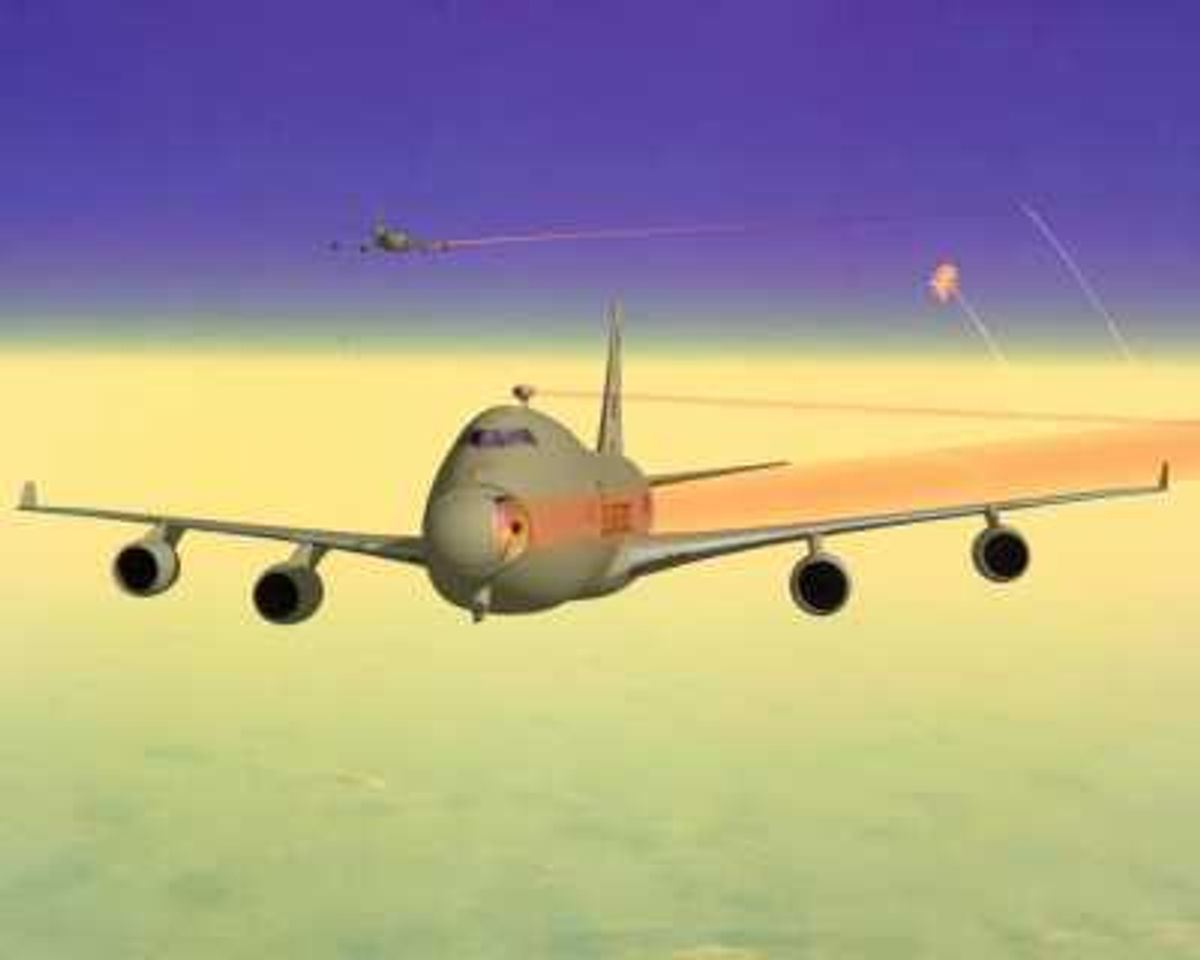Earlier this year, Defense Secretary Robert Gates announced that funding for the Airborne Laser--a U.S. military effort begun in 1996 to create laser-based missile defense--was being chopped to bits in the new budget, essentially limiting it to a research effort. But contrary to popular belief, the program wasn't cut. Instead, as Aviation Week reported about two weeks ago, "the first of four congressional committees to weigh in on ABL's future has sided with the Obama administration’s ... 2010 request for $187 million" which is enough to maintain a decent research effort.
In the July issue ofIEEE Spectrum, New Scientist Boston Correspondent and Laser Focus World contributing editor Jeff Hecht writes for us about the future of military lasers including ABL. It's a must-read, especially in light of the fact that new solid state technologies might make the entire ABL debate a moot point (it's a chemical laser, and as such it could already be outdated. And I probably don't need to mention that it is way, way over budget.).
This week, Hecht is at the Solid State and Diode Laser Technology Review of the Directed Energy Professional Society in Newton, Massachusetts. He'll be filing a series of dispatches this week, the first of which is right here.
My feature in the July issue of IEEE Spectrum describes dramatic progress in building solid-state lasers powerful enough to destroy military targets such as rockets, artillery, and missiles. But pressing system issues including damage to laser optics and cooling of the lasers have become an "elephant in the living room" for engineers trying to develop lasers that can be deployed on the battlefield, Sean Ross of the Air Force Research Laboratory at Kirtland Air Force Base in New Mexico told the Solid State and Diode Laser Technology Review of the Directed Energy Professional Society on June 30.
Ross said that three unidentified demonstrations of multikilowatt laser systems have fallen behind schedule because the laser caused unexpected damage to the optics that focus and direct the beam. Cooling systems have caused other problems, including vibrations that shook vital laser components. Ross is spot-on in calling for serious attention to these unglamorous problems; unless they're solved, the lasers will stay in the labs.
-- Jeff Hecht, Newton, Mass., June 30
PHOTO CREDIT: Wikimedia Commons
Sally Adee, formerly an associate editor at IEEE Spectrum, is now a technology features editor at New Scientist, in London. She says it was an honor to write her last feature for Spectrum about the European Space Agency’s Loredana Bessone, a woman she considers a role model. “One day, I’m going to hit her up at ESA to start training me as an astronaut,” she says with a wink. “Right after I get sick of playing roller derby in London.”



